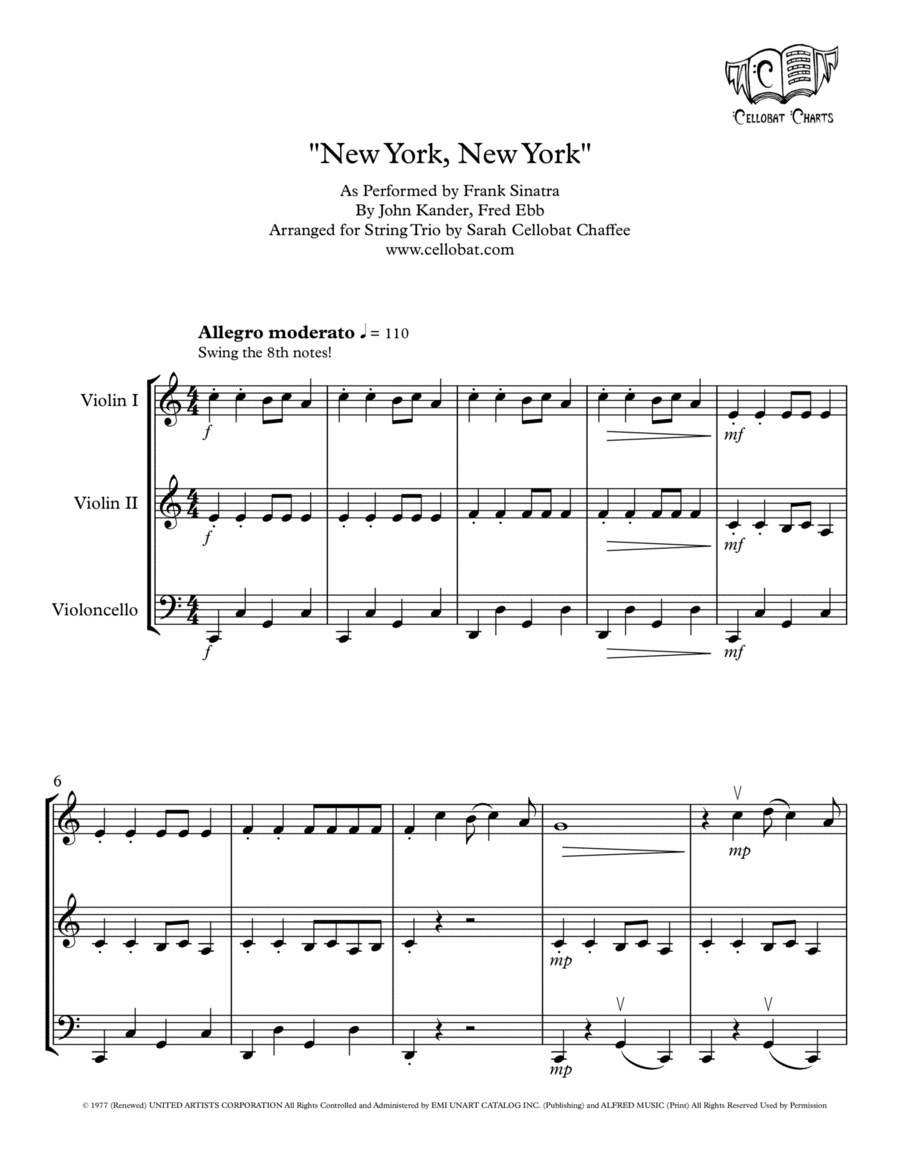String Trio Cello,Violin - Level 4 - Digital Download SKU: A0.1419194 By Frank Sinatra. By Fred Ebb and John Kander. Arranged by Sarah Cellobat Chaffee. Broadway,Film/TV,Jazz,Musical/Show,Pop,Standards. 12 pages. Sarah Cellobat Chaffee #1000626. Published by Sarah Cellobat Chaffee (A0.1419194). *INSTRUMENTATION: 2 VIOLINS & CELLO*New York, New York is really a song that needs no introduction! Written as the theme for the Martin Scorsese film of the same name in 1977, the song was originally performed by Liza Minnelli, and her version received a Golden Globe nomination that year. However, it didn't really become a mainstream hit until 1978, when Frank Sinatra included it in his performances at Radio City Music Hall; his version quickly became a massive success, and it's now considered one of his signature songs. To this day, it's still one of the best-known songs of all time about New York City, and it's been included in AFI's list of the top 100 songs in American cinema -- so you can't go wrong adding this one to your gig books! This Cellobat arrangement for your two-violin and cello trio features the soaring melodies, catchy big-band horn riffs, fun jazz harmonies, and feel-good vibe of the original for a chart your group will love to play...and you're sure to get your audience singing along, too! Rated advanced-intermediate for a few tricky rhythms and accidentals; this will be playable for more advanced students and sightreadable for professionals.Sarah âCellobatâ Chaffee is an in-demand acoustic & electric cellist and string arranger. Currently, she performs with legendary rock band Aerosmith in their âDeuces Are Wildâ residency show, and she is the principal cellist for the Raiders House Band, playing for a crowd of 60,000 at all of the team's home games. She also plays with many other groups including Premiere Wedding Music, Bella Electric Strings, the Femmes Of Rock, and David Perricoâs Pop Strings Orchestra. Sarah has performed and recorded with numerous other artists including Disturbed, Mötley Crüe, Celine Dion, Halsey, Michael Bublé, Sarah Brightman, and Lady A. She is the exclusive arranger for a number of award-winning wedding and event companies all across the United States, including Premiere Wedding Music, Las Vegas Music Oasis, and Impulse Strings, and she has created custom arrangements for many other ensembles all over the world. You can find her at:http://www.cellobat.comhttp://www.instagram.com/cellobathttps://www.youtube.com/@Cellobat.
